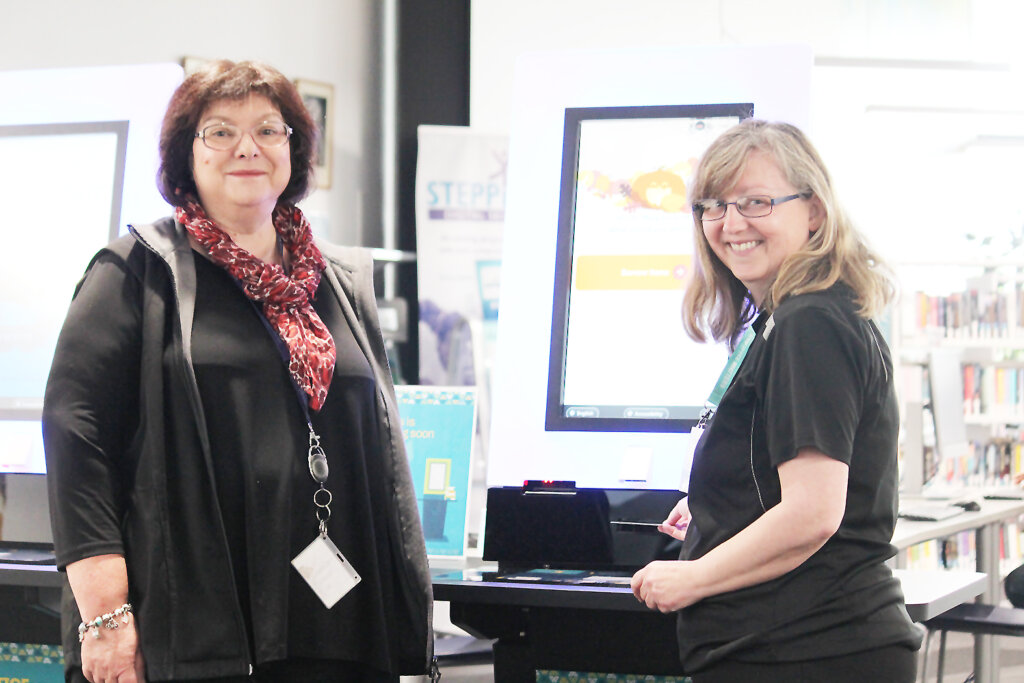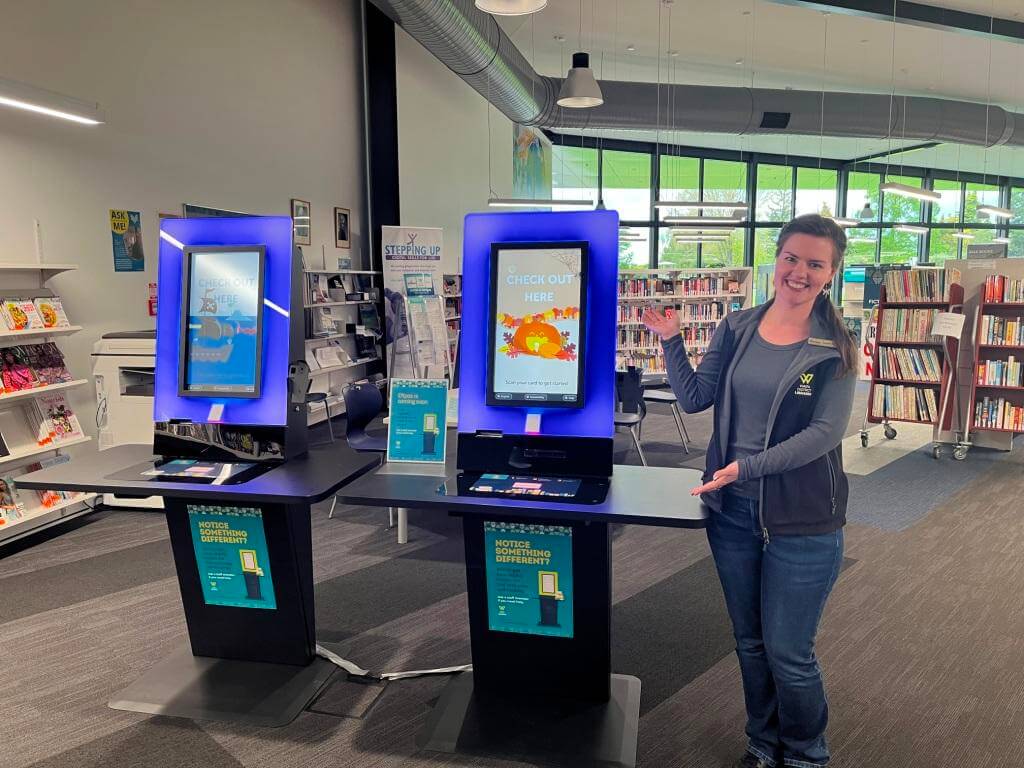
Booked out: Allyson Stock, library assistant, with Te Awamutu library supervisor Sheree Gross at the kiosk.
New technology which makes taking books out easier for library members is about to be introduced in Waipā.
Radio-frequency identification (RFID) uses electromagnetic fields to identify and track tags attached to objects. They have been inserted into books at both Te Awamutu and Cambridge libraries.
Users will be able to do their own issuing and renewing with their library cards or mobile phones.
Waipā District Council say the system will make visits faster for library members.
The wireless radio system and a tag inside the books provides for better inventory management and security, faster processing and reduced handling.
This system also promises to reduce the number of stolen items – which costs the libraries more than $10,000 a year.
Users will have access to two kiosks in the Te Awamutu and Cambridge libraries to do their own issuing and renewing. Books can also be renewed and issued from mobile phones via the Waipā District libraries app.
Libraries transform with SMART technology

Media release:
People visiting Waipā libraries this week will notice big changes as members use new technology to self-issue books with digital kiosks.
The new state-of-the-art system, called RFID (Radio Frequency Identification), incorporates a wireless radio system and an electronic tag attached to library items.
Waipā District Council community services manager Brad Ward said the technology upgrade is a “real game changer”.
“It makes library visits faster and more convenient with a grab-and-go approach. Customers can take control instead of waiting in a queue for staff to serve them and can do their own issuing, renewing or checking reserved items,” he said
“It’s easy, but if you need help, our staff are happy to guide you through the process.”
Library staff have been busy behind the scenes, electronically tagging more than 151,000 library items in preparation for the launch of RFID. The process took almost nine weeks and was undertaken alongside regular library duties.
There is also another exciting upgrade to streamline the return process, Ward said.
“Smart shelves are clever units located near the entrance of each library for returns. They look like ordinary shelves but contain a transmitter that activates when you place an item on the shelf. Blue tooth technology automatically checks in the borrowed item from your library card and updates the inventory system. You can see this happening in real-time on the attached screen.”
Staff can perform a library stock check at the touch of a button, making inventory control faster and more accurate.
“Another bonus is that RFID provides enhanced security, saving Waipā libraries around $23,000 per year in stolen items. I don’t think people realise the cost of theft on our service.”
In the coming weeks, residents will be able to download a new app and visit a Waipā library to experience RFID technology using their phones to self-issue, renew and manage reserved items. Look for Waipa District Libraries in the App Store or Google Play on your digital device.
You can also use your phone or PC to search the extensive catalogue of library books by visiting the Waipā libraries website. Just go to Waipalibraries.org.nz and look for the catalogue menu.
The library counter and after-hours returns slot are still available for those who want to borrow and return items the traditional way.








